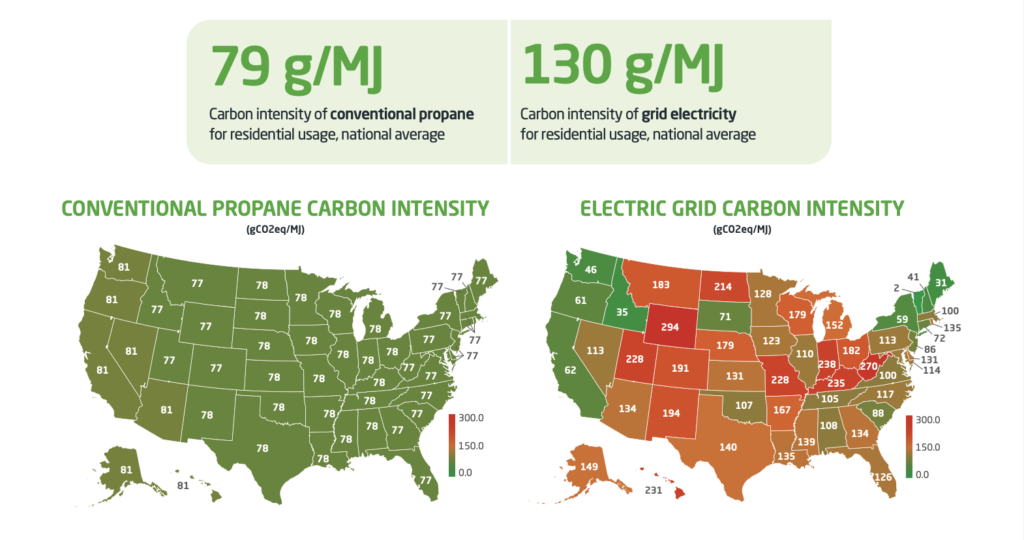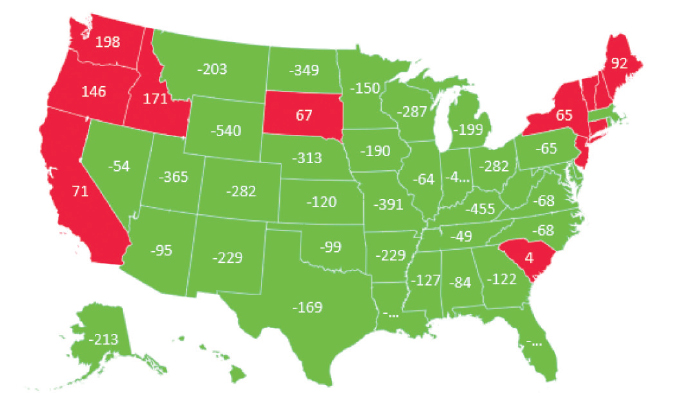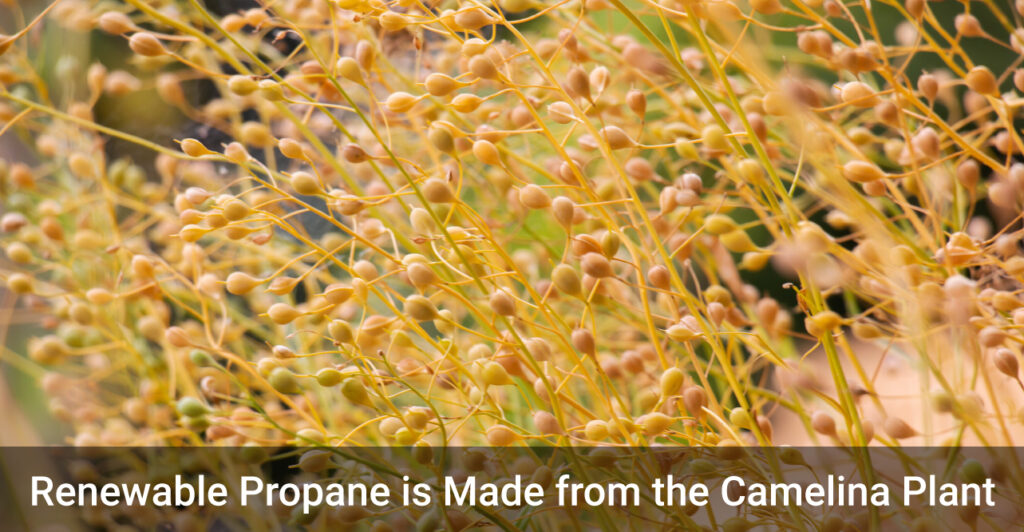
Michigan Propane,
Clean Energy for Over 100 Years
Propane is a low-carbon fuel, producing far fewer emissions than the equivalent amount of electricity generated from the U.S. grid (EPA).
Michigan's 100-year-old Green Fuel Explained
Michigan environmental policy experts from around the state explain that Michigan propane is an eco-friendly energy source that powers rural home heating and fuels fleet vehicles!
Efficient Propane Appliances Help Contribute to Meeting Michigan's Energy Goals in Several Ways:
Reduced Energy Consumption
Propane appliances are known for their high efficiency, performing the same tasks as traditional appliances while using less energy. This helps reduce overall energy consumption across residential, commercial, and industrial sectors, aligning with Michigan’s goals for energy conservation.
Lower Carbon Emissions
Propane is a cleaner fuel than other fossil fuels like coal or oil. Propane appliances, when used instead of less efficient or more polluting alternatives, can help lower carbon emissions, contributing to Michigan’s efforts to improve air quality.
Versatility and Reliability
Propane is used for heating, water heating, cooking, and more. It’s versatile and a valuable energy resource for both urban and rural areas of Michigan. Additionally, propane is not dependent on a centralized grid, offering reliability in areas where access to electricity may be limited or during power outages.
Support for Renewable Propane
While propane itself is a low-carbon fossil fuel, efforts are underway to produce renewable propane from sustainable sources such as biomass, waste, or renewable electricity. Transitioning to renewable propane will further align with Michigan’s renewable energy goals.
Economic benefits
Investing in efficient propane appliances can lead to cost savings for consumers and businesses over time through reduced energy bills. This can stimulate economic growth and support Michigan’s local businesses.
Propane

Low Carbon Green Fuel
Michigan's Fuel Diversity Keeps Us Safe

Annual CO₂ Emissions by Fuel Type & Volume
According to U.S Energy Information Administration (EIA), Michigan households
use, on average, 123 million BTU’s of Energy per year
Source: EIA.Gov
Fuel Type
Amount of Fuel Equalling 123 million BTUs
Pounds of CO2 emmited per year per household
Propane
1,332 Gallons
16,889
Electric
(Coal Based)
35,694 kWh
28,771
Fuel Oil
888 Gallons
20,202
Wood Cord
5.125 Cords
24,293
Michigan Fuel Diversity Includes Propane
Propane Power: Clean, Powerful, and Fueling Michigan's Future
Michigan House Rep. Wendzel loved test-driving a propane-powered pickup! Cleaner than diesel or gas, it’s a smart choice for reducing emissions while keeping power and performance on the road. She strongly believes Michigan needs fuel diversity.
Michigan Needs Fuel Diversity
Environmental policy expert explains why Michigan needs an all of the above energy solutions. Solar and wind are not enough.
Clean Vehicles Momentum
Jane McCurry, Clean Fuels Michigan Executive Director, explains why she is excited about all the momentum in the clean vehicles space.
Michigan Clean Cities Support Fuel Diversity
Michigan Environmentalist Executive explains the benefits of fuel diversity.
Michigan’s Clean Fuel: Propane!
Thousands of rural Michigan residents are cleaning up the environment with clean propane.
Thumb Bio Energy
Michigan’s Thumb BioEnergy is an important part of the state’s Fuel-Diversity. Clean vehicle fuels like propane, biodiesel, CNG, and others will cleanly power existing cars and trucks.
Raven Hill
Science-center explains Michigan’s clean burning fuel used in 320,000 rural homes.
Propane is a Clean Energy for Northern MI
Gaylord science teacher explains how propane used in vehicles, home heating and appliances is clean fuel source.
“All of the Above” Approach
Michigan Environmentalist Executive explains the benefits of fuel diversity.
Michigan Propane Cleaner than Our Electric Grid
Carbon intensity is the total carbon emissions (or total carbon footprint) embodied in an energy carrier such as propane or electricity right from the source to the point of use. For example, propane’s carbon intensity would include the total carbon dioxide emissions from the production, transport, storage, and combustion of propane. Electricity’s carbon intensity includes the total carbon dioxide emissions from extracting resources (such as coal, natural gas, materials for solar panels and wind turbines, etc.), generation of electricity, transmission and distribution of electricity, and end use of electricity.


locations where propane vehicles are better than electric vehicles
locations where electric vehicles are better than propane vehicles
The numbers on the chart for each location represent the difference in total CO2eq (Carbon Dioxide Equivalent) lifecycle emissions in U.S. tons when compared for a single medium-duty vehicle.
Renewable Propane Offers Near-Zero Emissions
What is Renewable Propane Made From?
How is Renewable Propane Made?
In many cases, it’s produced as a co-product of biodiesel production. Feedstocks go through a series of complex treatments and are then merged with hydrogen in a process called hydrogenolysis, which purifies the energy content.
Environmental Benefits
- Landfill diversion: Recycling cooking oil and meat fats into biodiesel and renewable propane helps cut the amount of waste deposited in landfills.
- Carbon reduction: Converting animal fats and cooking oils into renewable propane is also an ultra-low carbon intensity process that can be scaled up. This process is five times better than diesel and gasoline and more than one-and-a-half times better than U.S. grid electricity.

Conventional Propane is a 3-carbon-molecule and is considered low-carbon (EPA). Renewable Propane is nearly zero-carbon and ramping up in production and recognized by the EPA.
Camelina (Camellia Sativa) is one substance that is positioned to be a game changer in the renewable propane industry.
Electric Vehicles Human and Environmental Damage
HARVARD SCIENTIST
EXPOSES ELECTRIC VEHICLE
ENVIRONMENTAL DAMAGE
Militia in the Congo use children, their parents and other adults to mine the key ingredient in our electric vehicles – Cobalt. Around 75% of the world’s cobalt comes for the Congo.
— Siddharth Kara,
Harvard University, Health
and Human Rights Center
Here is one of thousands of children gathering a sack of THEIR cobalt… and he is on an industrial mining concession.
Electric Vehicles Face Challenges
As the supply chain for electric vehicles grows to keep pace with sales, there are serious human and environmental issues cropping up. Such are the recent news reports of the Harvard scientist who exposed the “… brutal mining practices, militia-controlled mining areas, child labor, and miningrelated deaths in the D.R.C. (Congo), where about 75% of the world’s supply of cobalt is mined.”

Siddharth Kara
Harvard University, Health and Human Rights Center
Siddharth Kara has been researching modern-day slavery, human trafficking and child labor for two decades. In his latest book, Cobalt Red, Kara investigates how cobalt is being extracted by freelance workers who do extremely dangerous labor for the equivalent of just a few dollars a day.


